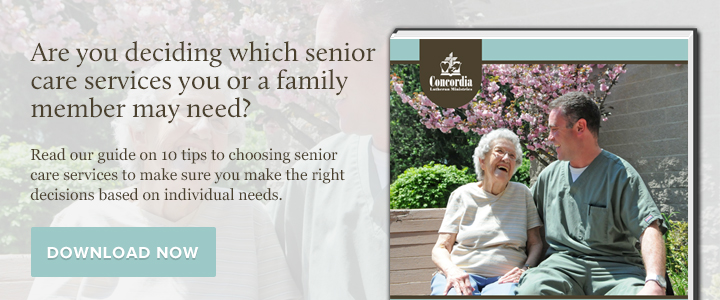Stroke Awareness Month Part 2: Coping with the Aftermath

May is Stroke Awareness Month, making now an excellent time to discuss how life can change, post-stroke. Strokes affect everyone a bit differently, so some roads to recovery will be longer than others. The most important part is that the stroke survivor, close friends and family, and primary caretakers have a clear understanding of what to expect.
Immediately Following the Stroke
While in the hospital following a stroke, the primary goal is to determine the cause, location, and severity of the stroke. Also to prevent a secondary stroke, determine the extent of brain damage, and how the brain damage may affect day-to-day life.
Strokes often result in weakness on one side of the body, decreased mobility, difficulty speaking and difficulty processing information. This means your loved one may not be able to accomplish all of their basic activities of daily living (ADLs) such as dressing, bathing, cooking and eating. They may also need to rely on you for transportation because they may not be able to drive.
Family members must be prepared for a long road to recovery, during which their loved one may not seem like themselves. It’s not uncommon for stroke patients to fall into depression, or become irritable as s response to their limited capacity – so emotional well-being must be top of mind.
The First Few Weeks Following the Stroke
In the first few weeks following a stroke, there will be a lot of changes to life and schedule. Your loved one will likely be prescribed medications for their stroke and any stroke-related side effects. It is important to understand the side effects of each medication, so that you can look for any ways they are negatively or positively impacting your loved one.
Once discharged from the hospital, a rehabilitation plan will be put in place. Sometimes this will begin at home, and sometimes this will begin at a rehabilitation center. This plan is likely to include speech therapy, occupational therapy and physical therapy. Rehabilitation will also require several changes to lifestyle – such as diet, exercise and elimination of high-risk stroke habits, such as smoking.
Once home, your loved one may not be able to care for themselves independently – meaning that a friend, family member or hired caregiver may be required.
The First Few Months Following a Stroke
Even if the rehabilitation plan is followed, full recovery may not be gained – but great strides can be made. The goal is to remain as positive as possible, and to celebrate each new accomplishment and milestone. Some days will be harder than others, and the recovery process can be frustrating for both the stroke patient and their loved ones. Seek out support groups for family members and stroke survivors, or even one-on-one counseling. This will give everyone involved an outlet for their frustration. Family caregivers must also make sure that they maintain balance in their life, by giving themselves a day or two off each week. If not full days off, large blocks of time several times a week can help alleviate some of the stress.
A stroke can take years to recover from fully, and some of the side effects may always remain. The first year after a stroke is the most important in terms of recovery, and having a stroke will require lifelong health changes. Make sure your loved one gets all the support they need by seeking out senior care assistance from Concordia Lutheran Ministries. By putting our faith into caring, Concordia’s caregivers are able to accommodate for almost any health concern or special need. If someone you know has recently suffered a stroke, take a tour of a Concordia location near you and see what makes us so different.
Get Updates From Concordia
There is always a LOT happening at Concordia! Would you like to stay up-to-date with our news and events? Sign up for our monthly e-newsletter here.